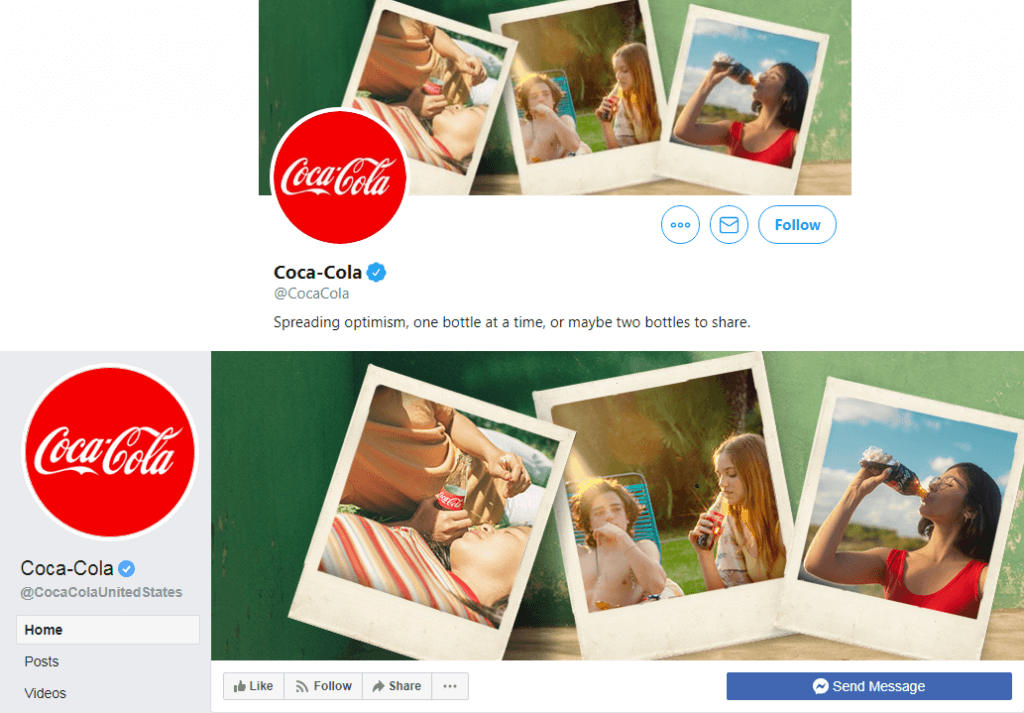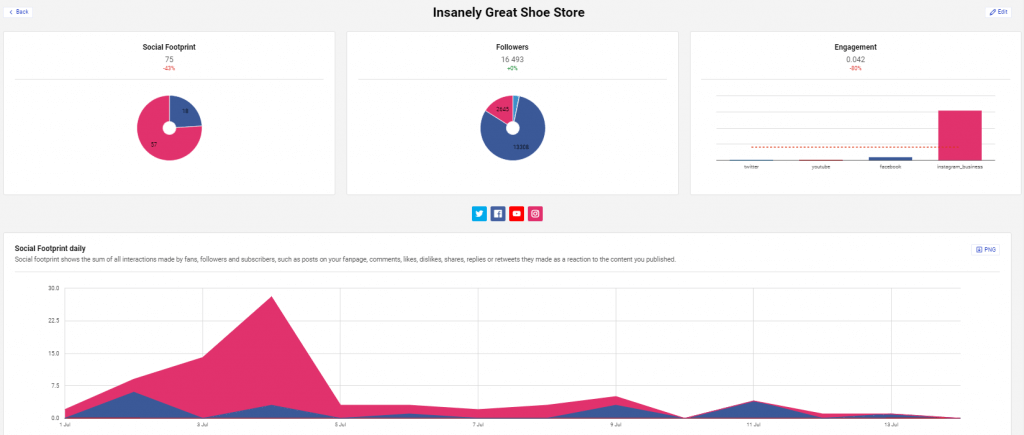Social media audit. Sounds scary, doesn’t it? Well, it shouldn’t. Auditing various areas of your brand’s marketing activity is something you should be doing on a regular basis, so it’s best you get comfortable with the term.
An audit helps you establish new goals for your social media presence and can serve as a benchmark for your work. Simply speaking, it’s a foundation for creating an effective social media strategy.
Don’t know how to conduct one? Don’t worry, it’s not that difficult – and we’re here for you! With our help, you will master the art of auditing social media in no time.
What is a social media audit?
A social media audit is, in short, a complete assessment of your social media presence. It examines your social channels over various networks and measures their effectiveness. You can compare it to a scheduled checkup at the doctor – it’s something you do to check if everything is fine and to identify potential problems in their early stages. That’s why regular social audits are both necessary and most effective.
Audits can also be useful in establishing your position on the market and benchmarking against your competition. You can analyze your competition almost the same way you audit your social media and compare the results.
Why should all businesses perform audits?
It doesn’t matter if your business is a multimillion, multinational corporation or if you’re just starting – social media are at the core of most modern marketing strategies. You need to skillfully manage them to attract people to your brand. Regular audits show whether you’re advancing towards your goals, which strategies and tactics work for you, and which don’t.
Data collected through audits should be one of the foundations of a well-crafted strategy. It’s the oil of the 21st century. Everyone needs data to run their businesses, and so do you.
How do you prepare for your first social media audit?
Before you start your social media audit, you have to answer some questions that will help determine the scope. They don’t have to be overly complicated. The point of this exercise is to establish how your current social media strategy is doing at the moment.
The basic questions you should ask yourself are:
- What is the goal of your social media activity? Is it an improved brand image, extended reach, conversions?
- Who is your target audience? Does your desired target group overlap with your actual social media following?
- What type of content do you post the most? Is it consistent with what your target audience is most likely to engage with?
- Is your communication consistent? Does your brand have a unique voice?
- What brand feel are you going for? Does your brand image speak to your target audience?
Asking and answering these questions will help you establish the scope of your audit and define the expected effects. For example, comparing your desired target audience with the demographics of your actual following can provide you with valuable insights as to how your communications should be adjusted.
How to perform a social media audit
Let’s get the party started… It’s time to perform your first social media audit. The first step is to create a spreadsheet that will include all of your social media accounts as well as important metrics and KPIs.
Start your audit by identifying all your brand’s social channels, official and unofficial. Official accounts are your online business cards, customer care centers, and means of spreading the word about your company and products. Unofficial accounts, created by people not related to your organizations, are the ones you don’t control and that can potentially harm your brand image. Looking up your brand name in different social networks should do the job.
If you find an unofficial account, check if it’s a fan account praising your brand or if it slanders you unapologetically. The former can be beneficial to your brand, and you can leave it as is (but don’t forget to monitor it, things can change). The latter is harmful to your brand – notify the social network and request they take down the unofficial account.
Let’s get back to your official social media channels. Start with taking a good look at the visual aspects of your branding. Make sure all of your profile photos correspond to social media guidelines regarding dimensions and quality as well as your desired brand feel. A good practice is to have the same profile photo on every channel and account across social media platforms. Using your logo as the profile picture is another good idea – it visually connects all your channels and makes them easily recognizable.

Another important step when getting started is checking the URLs of your channels. The ideal situation is, again, to have the same URL format on all platforms. It makes direct search easier – and you want people to find your brand easily, right?
Which social media platforms should you audit?
The answer is: it depends on various factors. Different industries and brands have different needs. For the fashion and lifestyle brands, Instagram and Pinterest might the most important channels, even though they’re not the largest social networks out there.
A social media audit is, of course, a way of assessing your existing social media accounts and their performance – include all of them in your spreadsheet. But it’s also a great opportunity to find new ways to connect with potential customers. When figuring out additional social networks to include in your strategy, it’s important to stay focused on your target audience. Check where your competitors are present and keep a close eye on how their accounts perform. If they generate high engagement on specific platforms, chances are you could also establish a successful presence there. After all, if your products and services are similar, the same can likely be said about your audiences.

In-depth social media analytics
Measure your social media marketing results. Track competitors and improve performance using one simple tool. Try it for free:
Try NapoleonCat free for 14 days. No credit card required.
Crucial metrics and areas to assess
Every social media platform has specific metrics you should focus on in your audit. It’s important to know the difference – some metrics have the same names, but different meanings. For example, a view on YouTube means that a video was watched for at least 30 seconds. On Facebook, only 3 seconds are enough to be counted as a view.
Now that we got that disclaimer out of the way, let’s move on to specifics. The most important social media metrics and areas to analyze in every audit are reach, engagement, content, and customer service. Let’s look at them in more detail.
Reach
Your social following is the total number of people who follow your channels. They can be named differently, depending on the platform: subscribers on YouTube, fans on Facebook, etc. Facebook actually distinguishes fans (people who like your Page) and followers (people who follow it but don’t necessarily like it). For the first audit, focus on the number of your followers, because they are people who want to hear from you.
Reach itself is the number of unique users who you reached with your content. It doesn’t matter if they viewed it once or more, they still count as one.

This works differently with impressions, which indicate how many times your content has been viewed. That’s why the number of impressions is never lower than the number representing reach.
A high number of impressions is usually a good indication of successful content, but it’s important to note that sponsored content can be an exception. When investing in social media ads, make sure you don’t overexpose your target audience to your paid content – they might grow annoyed with your brand if your ads are always in their feed.
Not all social media platforms provide you with reach and impressions data. YouTube, for example, doesn’t. The closest thing to reach metrics on YouTube is views.
Engagement
You don’t want people to only view your content, you want them to react to it and engage with it. Different social media platforms give users different opportunities to interact with content:
- On Facebook, you can comment, share and react
- On Twitter, you can retweet, like, and answer
- On Instagram, you can like or comment
- On YouTube, you can give thumbs up, thumbs down or comment
All these actions provide you with insights as to how your followers feel and what they think about your brand.
Engagement is often the first step to a conversion. Low engagement rates often mean that your content is not well-suited for your target group. Negative engagements like thumbs down on YouTube or Angry or Sad reactions on Facebook are indicators of people’s discontent with your communication and can be early signs of an upcoming crisis.
Content
You probably know that omnipresent marketing proverb – content is king. The saying applies to social media as much as it does to any other area of digital marketing. Auditing your content helps you assess whether your messaging resonates with your audience.
You can divide your content by type (video, image, link, text) and by topic (product updates, promotions, branding, memes, etc.). Sum up the reach and engagement of each section to find out which type and topic are the most effective in terms of activating your audience. Keep these insights top of mind when planning a content calendar for the months ahead.
Customer service
I know it seems obvious, but it can never be stressed enough. For many customers, social media have become the first point of contact with brands. It’s so much easier to write a private message to a Facebook Page or leave a public comment than to make a phone call or even send an email. That’s why during your audit, you should also take a close look at how you handle customer inquiries in social media.

A dissatisfied customer who didn’t get an answer to their comment or private message on time can move on to your competitor. Worse still, they can write a public post complaining about your poor customer service, and sometimes that’s all it takes to spark a PR crisis.
Tools to make social media audits easier
Spreadsheets are the most easily available and easy to use tool to help you with conducting a social media audit. You can find a sample audit spreadsheet here. But manually filling in the sheet can be a mundane and time-consuming task, especially if you have many profiles to analyze and want to conduct a thorough, detailed audit, combining data from several channels.
Accessing the data you need to conduct a social media audit is easier than ever, but there are a number of ways you can go about it.
Built-in analytics tools provided by most social media platforms give you access to an array of valuable data. Instagram and Facebook Insights, Twitter Analytics, LinkedIn Page Analytics, and YouTube Analytics let you check your reach and engagement without leaving the platforms. They offer you a quick overview of vital statistics, but their time scope is limited – 90 days of data is an industry standard. This might be enough for your first social media performance audit, but if you need a wider perspective on your social media performance, try external social analytics tools.
Google Analytics is a useful tool for measuring the effectiveness of your social media activities, referral traffic, and the ROI of your campaigns. It also helps in understanding the flow of users visiting your website via your social media profiles.
For a more granular look into your social media performance across channels, try a social media monitoring, analytics, and reporting tool like our very own NapoleonCat. Combine our in-depth analytics with automated reporting to collect all the information you need in a streamlined process.
There you have it! Apply our 101 to plan and carry out your first social media audit and use the results to improve your strategy based on data-driven insights. Good luck!

Social media marketing made easier
Analyze, generate reports, schedule posts, automate comment moderation. Save time and boost your results. Try it for free:
Try NapoleonCat free for 14 days. No credit card required.
